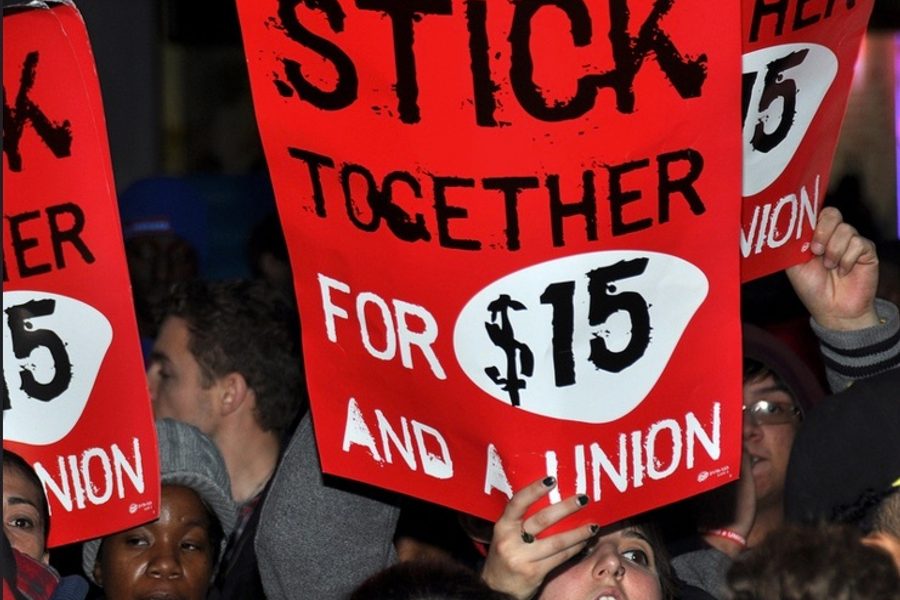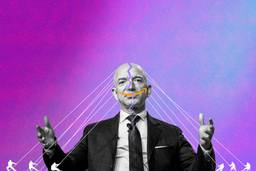
It looked like the culmination of an incredible series of victories for low-wage workers. A major union local in California announced that they had acquired enough signatures to qualify a ballot measure to raise the statewide minimum wage in increments to $15 an hour by 2021. Notable elected officials like 2018 gubernatorial candidate Gavin Newsom and dozens of other politicians, unions, community organizations and even small businesses had signed on. A recent Field Poll showed that 68 percent of the electorate supported the increase. Amid nationwide protests for higher wages, the stars were aligned to give over 19 million workers in California — 12 percent of the total workforce in America — an unprecedented wage floor.
Then, out of nowhere, another group announced that they, too, would launch a mostly similar ballot measure, risking voter confusion and competing resources for something that would otherwise pass with a strong campaign.
The punch line? The two groups are actually part of the same union.
The strange turn of events reflects a long-simmering feud between the Service Employees International Union (SEIU) state council, made up of SEIU locals throughout California and encompassing over 700,000 members, and one of its affiliates, SEIU-United Healthcare Workers West (UHW). SEIU-UHW already has their minimum wage initiative in the field, but the state council announced theirs anyway. Both sides believe the dispute will eventually reach some resolution. But the ugly legacy of distrust and backbiting threatens to put low-wage workers in the middle of a squabble they had nothing to do with.
Back in 2005, two SEIU locals merged to form UHW, creating a powerful affiliate with 150,000 members in home care, nursing homes and hospitals. At the time, Sal Rosselli, the head of the local, rejected then-SEIU President Andy Stern’s vision for union membership growth, which he believed led to weak bargaining contracts and sweetheart deals for health care conglomerates. Their differences, along with allegations of financial mismanagement by Stern that Rosselli and other leaders denied, led to a 2009 takeover of UHW by the international, removing Rosselli and 100 other elected officers. Rosselli insisted the takeover was about squelching union democracy and rank-and-file worker engagement.
Rosselli eventually formed the National Union of Healthcare Workers (NUHW), and many members followed him there. But SEIU-UHW remained, under the control of a Stern-backed trustee named Dave Regan. Over time, UHW built up to its original strength of 150,000 workers.
But the tensions didn’t leave with Rosselli. Regan, who has been criticized by some labor and consumer advocates for putting together a favorable deal with the California Hospital Association that included de facto gag orders on workers over quality and safety issues, clashed with new SEIU President Mary Kay Henry. In a move first attempted back in 2009 when Rosselli was at the controls, Henry’s SEIU split the UHW local, taking 70,000 members away. In a leaked memo, Regan called the move a “massive betrayal of our stated principles and values,” although he favored such a carve-up in 2009. UHW has been labeled hypocritical corporate sellouts on one side, and SEIU International an unfeeling autocracy on the other.
The minimum wage increase became a key bargaining chip in this fight. The SEIU California State Council, through its Northern California Local 1021, has engaged in local wage drives since the Fight for $15 movement changed the conversation around low wages. They succeeded with a regional minimum wage strategy in the Bay Area, securing gradual hikes to $15 an hour in San Francisco, Emeryville and Berkeley, working with Fight for $15 members on the ground. Los Angeles city and county also passed a $15 ordinance.
But it was SEIU-UHW who announced their ballot measure in April. Spokesman Steve Trossman said that the union originally wanted to file in 2013, before the state legislature passed a more moderate minimum wage increase. Once they began collecting signatures in August, they quickly secured over 500,000, more than enough to qualify.
The SEIU state council’s proposed ballot measure is slightly different. It would raise the minimum wage to $15 an hour by 2020, one year before UHW’s (small businesses would get an extra year to increase their wages). It would also include six paid sick days per year. And they’ve partnered with the Fight for $15 movement that helped them to victories in the Bay Area. “This is a powerful force for change in our nation, and we’re ready to win a landmark victory for all California workers,” said Roxanne Sanchez, President of SEIU Local 1021, at the announcement.
“It was surprising that they did that, given that this has all but qualified,” said Steve Trossman of SEIU-UHW. He said that the local wanted to file early, while the state council was still debating the measure. Early qualification ensures a higher spot on the ballot, an important factor when there could be as many as 19 initiatives voted on in California in November 2016. Plus, the UHW measure fits with a year-long initiative called the Fairness Project, aiming to build a war chest for ballot action in 24 states.
On the other hand, SEIU-UHW has a history of announcing ballot measures without much follow-through. In 2014, they used the threat of initiatives to cap CEO pay at hospitals and prices for medical treatment to make their deal with the California Hospital Association. While the local has gathered signatures before, they’ve never organized to win their own ballot measure, a costly proposition estimated at between $20-$30 million.
While declining to give specific figures, Trossman said “we’re going to spend millions of dollars to pass this thing,” and that he was confident UHW “will be able to attract money from big and small donors,” suggesting a strategy of qualifying for the ballot first and fundraising later. Kristin Lynch, spokeswoman for SEIU 1021, said they and their coalition partners are prepared to spend the $20-$30 million necessary. “We’re confident that this speaks to the will of the people,” Lynch said.
Obviously, whatever faction responsible for a living wage victory will carry clout in California and a leg up on organizing grateful low-wage workers. And with UHW needing to prove their worth as the international SEIU pulls them apart, they are unlikely to give up that opportunity, especially if they are already eligible for the ballot. “I can’t imagine that [the state council] would spend millions of dollars on something that for all intents and purposes has qualified,” said UHW’s Steve Trossman.
Jamie Court of the veteran state progressive organization Consumer Watchdog believes that SEIU-UHW’s Regan could be using leverage from the ballot measure to get his members back. “You never know what’s on a desperate man’s mind,” Court said. “It’s his way of shaking down the labor movement.”
UHW has proposed a second ballot measure for 2016, which would extend 2012’s Proposition 30 income tax increases, which helped balance the California budget. This is also a duplicate; the California Teachers Association and SEIU state council have introduced their own version. Rather than the current practice of delivering the proceeds of the taxes to education, UHW’s Prop 30 extension earmarks nearly half of the annual funds for the state Medicaid program, giving a financial incentive to the healthcare workers union to pass it.
All sides agree that it would be preferable to get to one ballot measure. But it’s impossible to divorce this situation from the bad feelings between the national SEIU and its affiliate. A lack of trust led to the multiple ballot measures in the first place, and it could poison any negotiations toward a settlement. (UHW’s Trossman said that there have been “no detailed discussions” between the two sides yet).
If talks break down, having two ballot measures on functionally the same issue muddles the message and makes it difficult to explain to a normally disengaged electorate. Per state law, whatever measure passed with the most votes would take effect, so both sides would have to spend to beat their business opposition and each other.
Jamie Court of Consumer Watchdog recalled a similar situation in 1996. “We had an initiative on HMO reform, SEIU did another one,” Court said. “All the insurance industry did was call us twins.” Both initiatives lost.
New rules in California allow groups to withdraw initiatives after submitting signatures, and give the legislature a chance to negotiate or make amendments to ballot measures. But even with all the off-ramps and safeguards, there’s no guarantee for a resolution.
Both SEIU and its UHW affiliate sent members to marches across California and the nation for a higher minimum wage. The proposals have popular support. Even in a down year for Democrats, 2014 saw multiple statewide victories on minimum wage increases. It would be sad if the biggest triumph for the Fight for $15 movement to date was squelched because union factions decided to use the issue as part of a power play. “This is the story of the defeat of the left,” Court said.
“We will continue to have conversations,” said Roxanne Sanchez of SEIU 1021. “We need to get to one ballot measure.”







